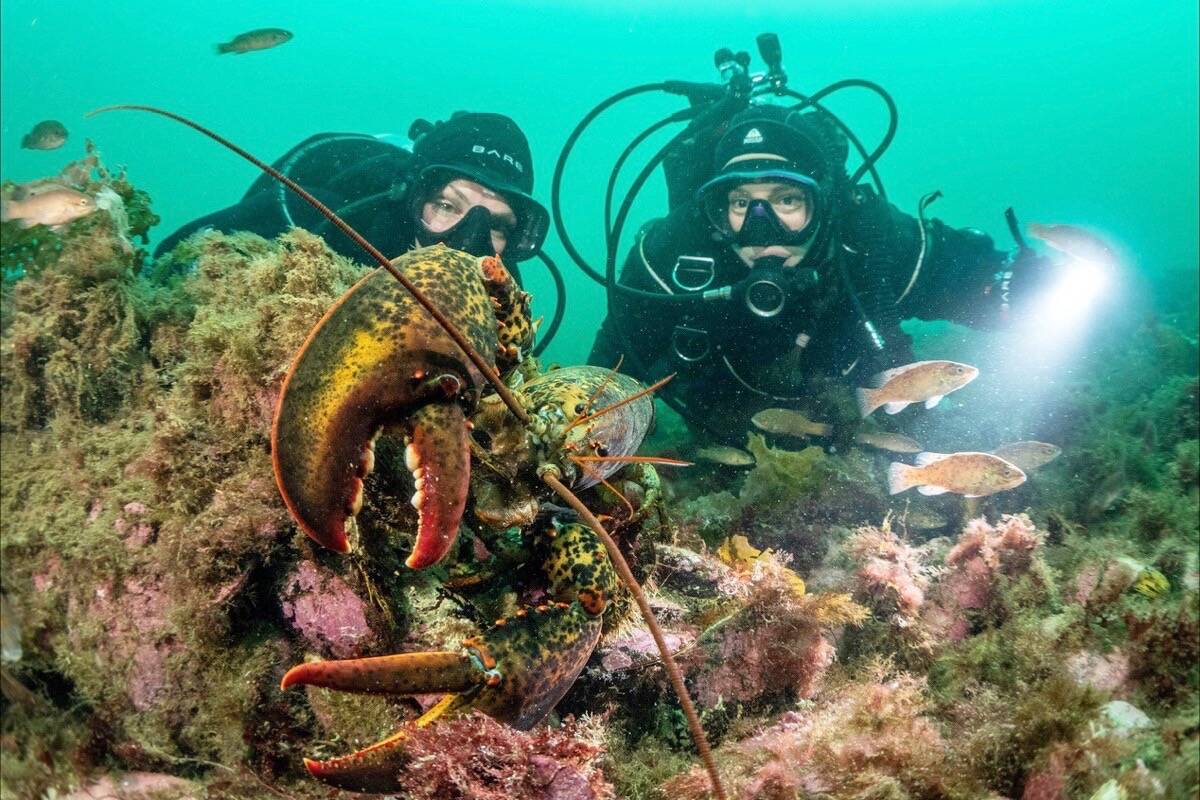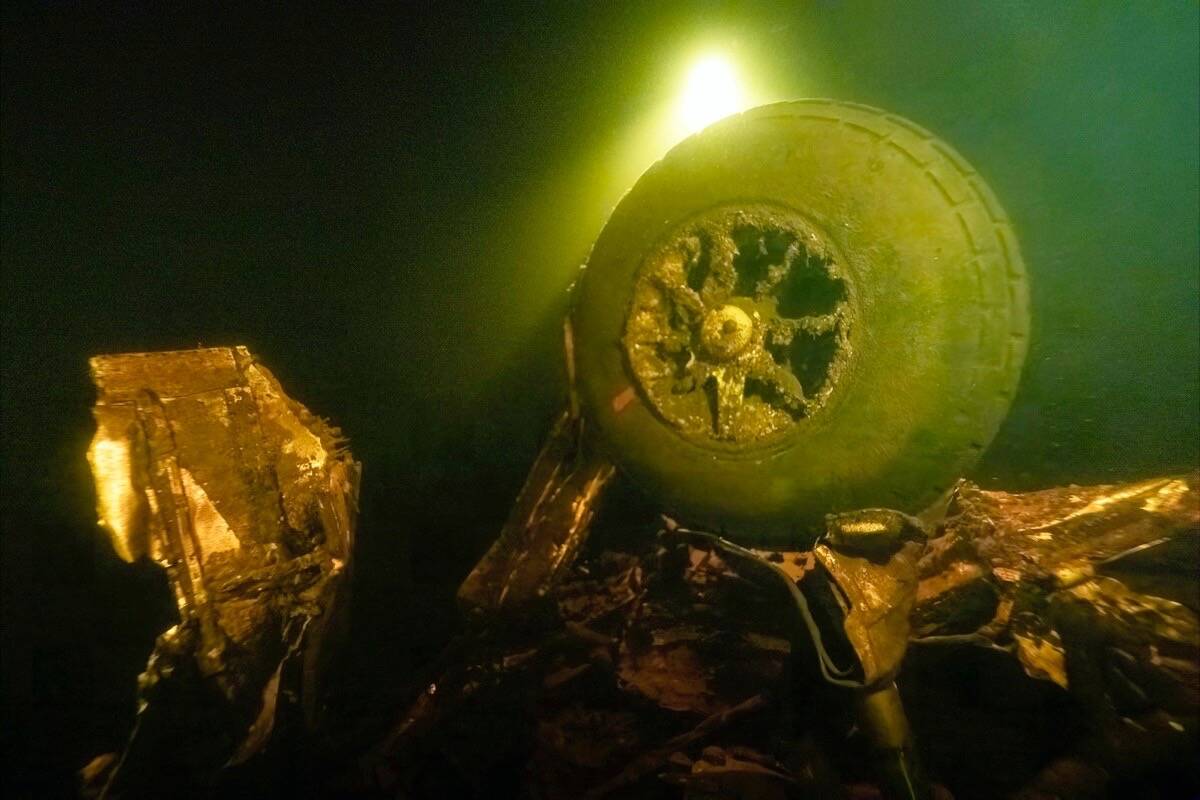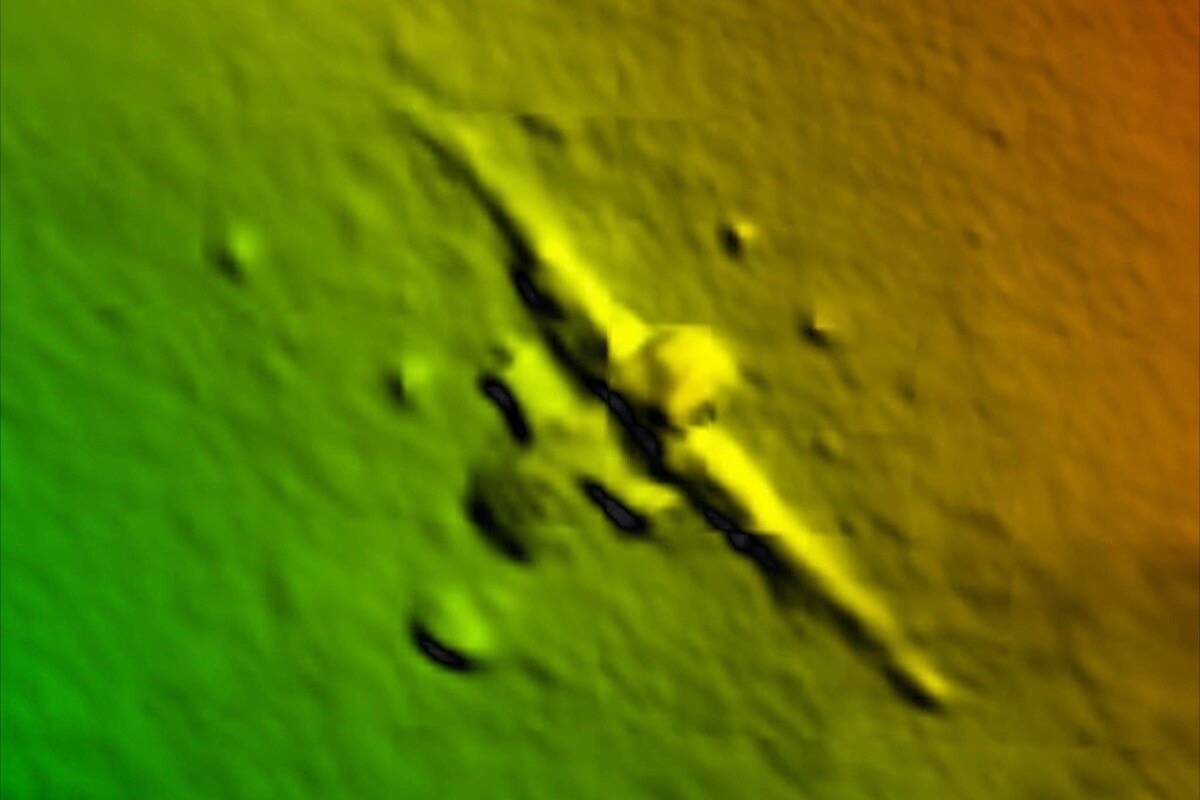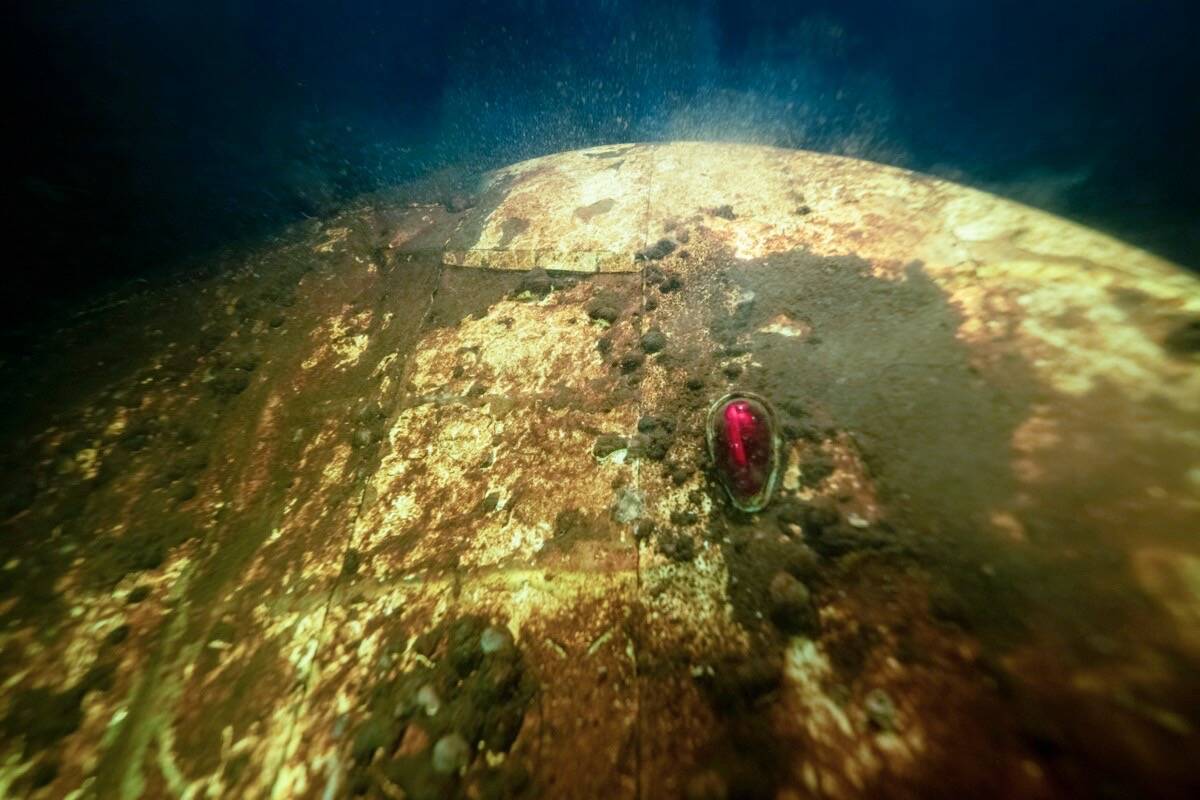Tiare Boyes could barely see out of her goggles – relying on a line to guide her and her diving partner as they descended into the murky abyss of Newfoundland’s Gander Lake in search of a Second World War-era relic.
“The water in the lake is like a well-steeped cup of tea,” she told Black Press Media. “As you sink down into the darkness, it just turns into pitch, inky blackness. The light gets swallowed up.”
After reaching a depth of about 47 metres, Boyes and her colleague, Krystal Janicki, caught their first glimpse of the Royal Canadian Air Force B-24 Liberator Bomber that went down shortly after takeoff in September 1943.
“Suddenly we see some metal come out of the darkness and we see this very large airplane tire,” recalled Boyes, a Saanich resident. “It kind of felt like it came out of nowhere. And then suddenly you’re on this World War II bomber that people have been looking for for almost 80 years to the date.”
Boyes and Janicki, both certified technical divers, were part of an international team that confirmed the location of the wreckage on Sept. 5 – the 79th anniversary of the crash. They were also among four divers, including underwater cinematographer Maxwel Hohn and DIVER magazine editor Russell Clark, who call Vancouver Island home.
Supported by the Royal Canadian Geographic Society (RCGS), the Shipwreck Preservation Society of Newfoundland and Labrador (SPSNL) and Ocean Quest Adventures, Boyes and Janicki’s dive was just one of six completed in teams of two as part of the effort to locate and identify Liberator 589D.
It took nearly a decade for researcher and diver Tony Merkle to approximate the latitude and longitude coordinates of the crash, according to Boyes. In July, Merkle and SPSNL board member Kirk Regular conducted a multibeam sonar survey to provide initial 3D images of the wreckage along with its exact location which made diving possible.
The expedition below the surface of Gander Lake is part of a larger RCGS-flagged project, the Great Island Expedition, which has taken the team of divers and researchers to historic sites across Newfoundland.
Once on the wreck, the pair swam along the fuselage and one of the wings with the goal to take photos to identify the aircraft. Limited air meant the two divers were only able to stay down at the wreck for around 15 minutes before beginning their ascent, with necessary decompression stops along the way.
In the end, Boyes’ camera malfunctioned during the dive, unfortunately leaving her unable to capture her own photos of the lost relic. But, she says, it gave her a chance to soak it all in.
“It’s a grave site, there are three bodies still inside this plane, only one was recovered,” she said. “So it was an opportunity to really consider the profoundness of this site.”
The fate of Liberator 589D now rests in the hands of the Canadian military, who will decide if another attempt to recover the bomber will be made in the future.
ALSO READ: Victoria’s next council to decide Harris Green Village proposal’s future
ALSO READ: Tiny home villages as solution to homelessness? 3 B.C. mayors say yes
@AustinEastphal
austin.westphal@saanichnews.com
Like us on Facebook and follow us on Twitter.




